Image
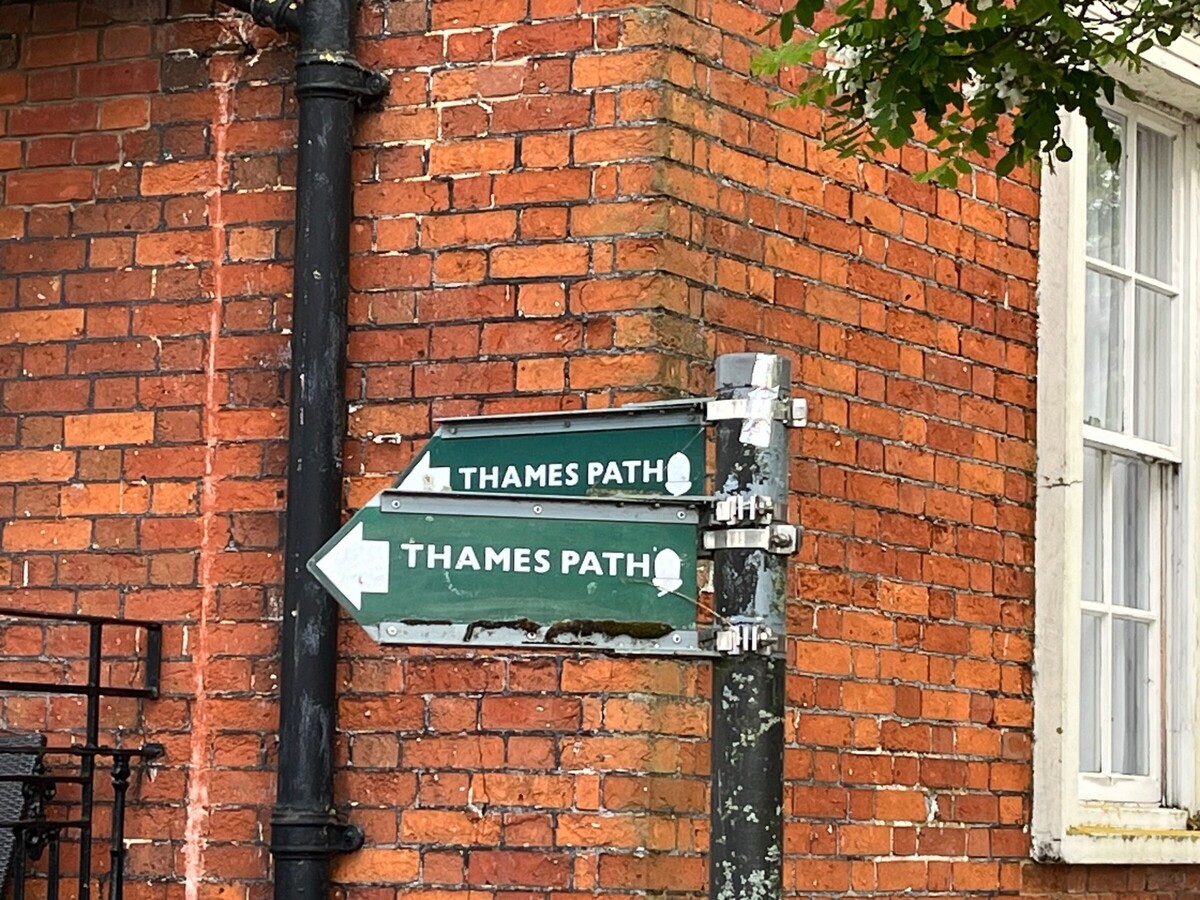
by Mike Strzelecki*
“There comes a longing never to travel again except on foot.” - Wendell Berry.
The simplicity of walking - the most elemental of body movements - holds a deep intrigue when traveling. There’s no better means of conveyance to truly and intimately experience a place. Instead of seeing a new location behind the proverbial plexiglass, the location becomes tactile. You can turn over the pebbles, savor every drop of rain, brush up against the most lovely wildflowers, and handshake locals. There is no better way to see the world than at 3 miles per hour.
With this in mind, my wife and I, along with some like-minded friends, recently satisfied our quest for adventure by partaking in an inn-to-inn trek across England, on the banks of the Thames River. Here are a few images and vignettes from our five-day, 65-mile walk.
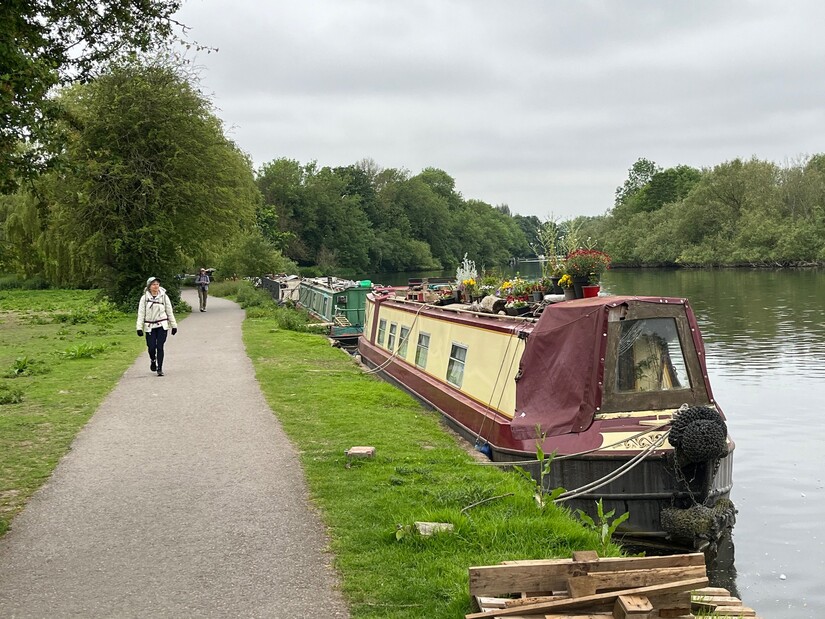
The Thames River cleaves England into two chunks. It originates in the Cotswolds to the west, along the Wales border, and flows eastward before dumping into the English Channel. The river is 185 miles long, and its entire length is enlaced with a walking trail, known as the Thames Path. The Thames Path passes through pastoral farmland and slips through villages that have turned back time. It passes by some of England’s grandest and most notable castles and homesteads, and pushes deep into downtown London.
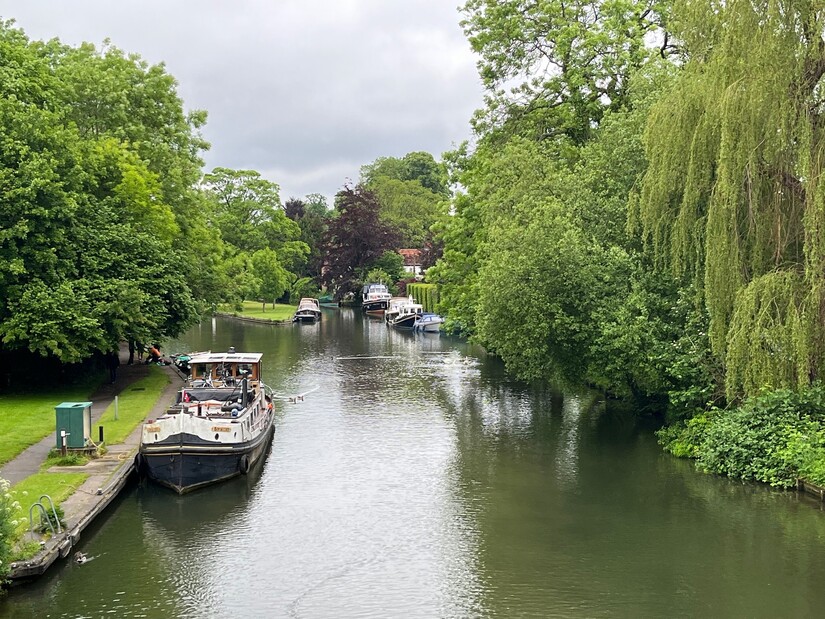
Day one - Reading to Henley-on-Thames (14 miles)
The town of Reading sits on the Thames River, a 45-minute train ride from London. It is where our adventure began. Reading provided a great window into the tug-of-war going on in England between history and modernization. We strode narrow cobbled streets dating back centuries and toured the ruins of Reading Abbey, founded in 1121 by Henry I “for the salvation of my soul.” But interspersed with such sacred artifacts were modern steel-and-glass office and residential buildings, and loads of fast-food restaurants. Both worlds made strong presences here.
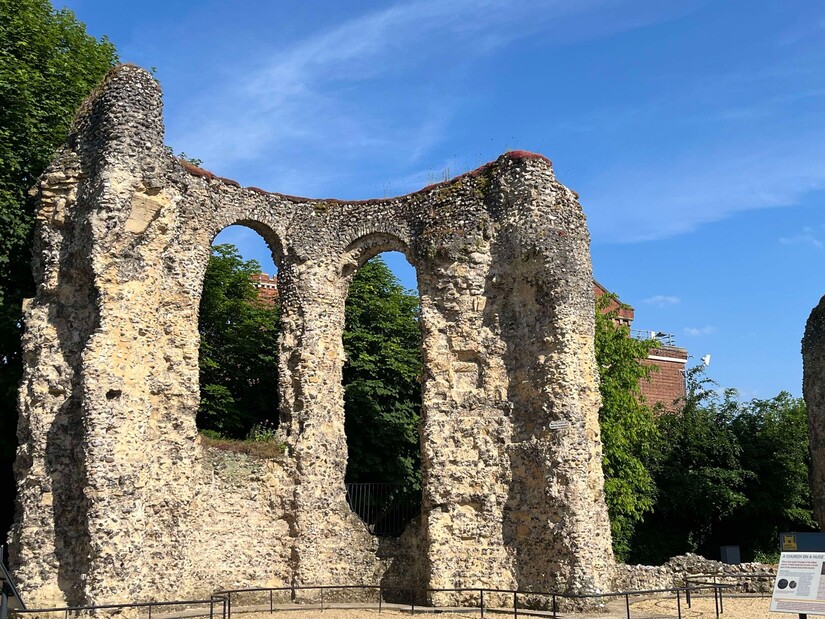
Reading provided my first foray into Michelin-rated dining, a unique experience for this Chipotle-guy. We supped at the elegant London Street Brasserie, a refurbished low-slung brick warehouse overlooking the Kennet and Avon Canal. We shared yummy fried onion tarts for the appetizer. For our main dish, my wife Kelly savored a bowl of roasted root vegetables and soft cheeses while I ventured into Morocco for a plate of chicken and chickpea harissa. We cleansed our palates with generous swallows of elderberry spritzers. We appreciated every bite, knowing that for the rest of our journey, we would be leaning heavily on pub food and tea shops.
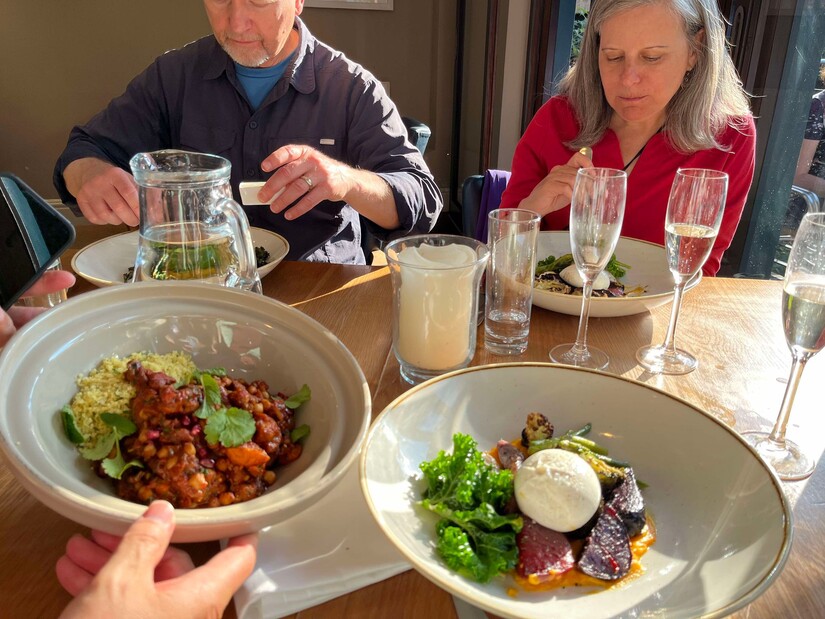
The next morning, we trekked. Our first day was a 14-mile ramble into Henley-on-Thames. The Thames River unfurled before us, tranquil and flat, undisturbed. The current was barely noticeable. Locks sprang up every ten miles or so, providing ideal resting spots. Each lock included a lockhouse with a well-tended garden. We were told that the lockhouses competed with one another for the most colorful flower display. Along many sections, the riverbanks were home to narrowboats - many used as permanent residences.
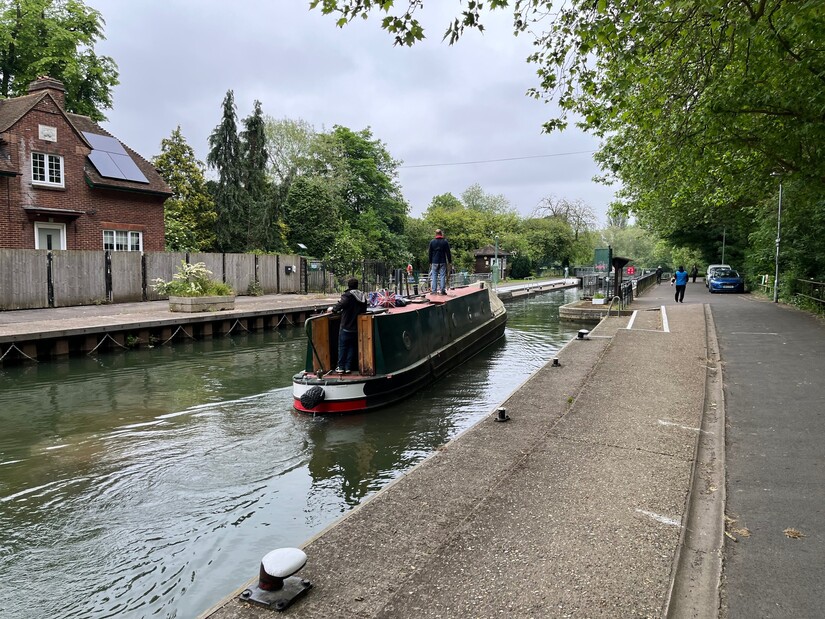
Mid-morning, we agreed to a tea break in the unspoiled village of Sonning. Sonning was just a few blocks in size, and had cobblestone streets and hobbit homes made of brick and timber with terracotta roofs. Sonning is the home of both JImmy Page of Led Zeppelin, and the primary residence of George Clooney (his wife is a practicing English attorney).
Following a few mugs of Earl Grey, we decided to make locating George Clooney’s house our primary goal while in town. We encountered a local couple walking the path. We asked them for the location of the Clooney mansion.
“I have no idea,” declared the wife.
The husband chimed in and began offering directions to us. He was interrupted by his wife who scolded him and chimed even louder, “WE DON’T KNOW WHERE GEORGE CLOONEY’S HOUSE IS, REMEMBER?”
The husband finished his directions, pointing us in the direction of the house. Thinking we scored a personal victory, we crossed a brick bridge dating to 1775 and came to a viewing area of the Clooney mansion, as per the husband’s instructions. We snapped a few pictures and proudly threw them up on social media.
It was not until after we got home that we realized we got totally duped. It was in fact not George Clooney’s house we photographed, but just a random large estate of an unknown Brit. The locals did a fine job of protecting their own from us tourists. This is the picture that is not George Clooney’s house.
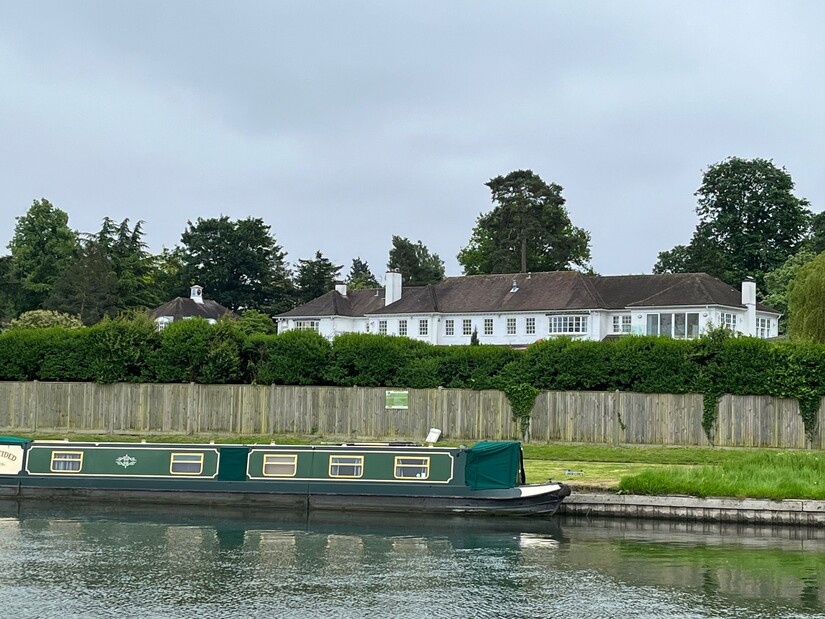
We ended the first day in the village of Henley-on-Thames, considered the rowing capital of the world. Henley-on-Thames is home to one of the oldest and largest rowing regattas in the world, and ground zero for England’s Olympic rowing teams. Instead of staying in an historic inn in Henley, we opted for a room in the Leander Club, which is the oldest and most famous rowing boathouse in the world. It is home to Sir Steve Redgrave, perhaps the best rower in history. He won gold medals in five straight Olympics.
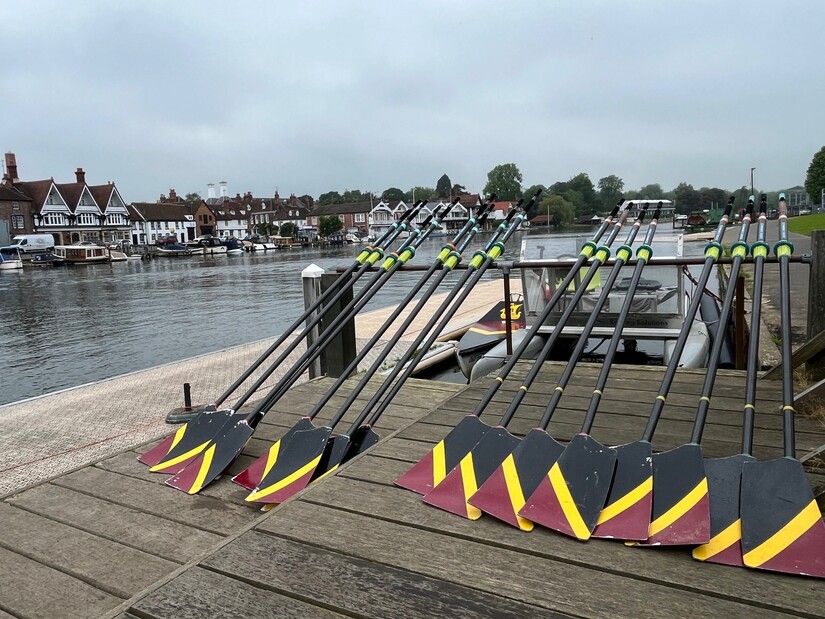
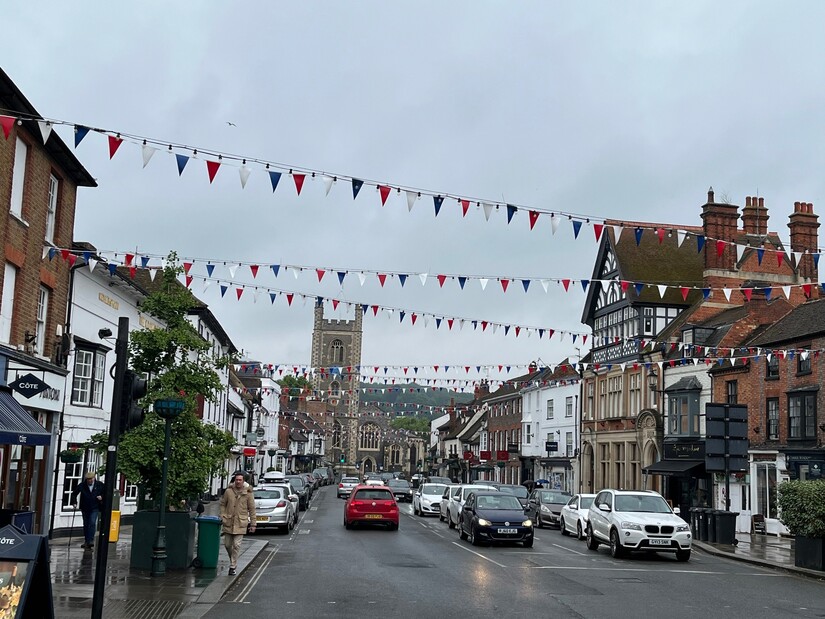
Day two - Henley-on-Thames to Cookham (15 miles)
Day two afforded us the quintessential British experience - battleship gray skies and unshakable rain. We slogged about 15 muddy miles. We passed through a magnificent estate, wandering past a herd of about 100 albino deer. We cut through sheep pastures where ewes held their ground, shielding their babies from our presence. We passed mansions unlike anything seen in the United States, some springing up from vast fields of yellow and white wildflowers..
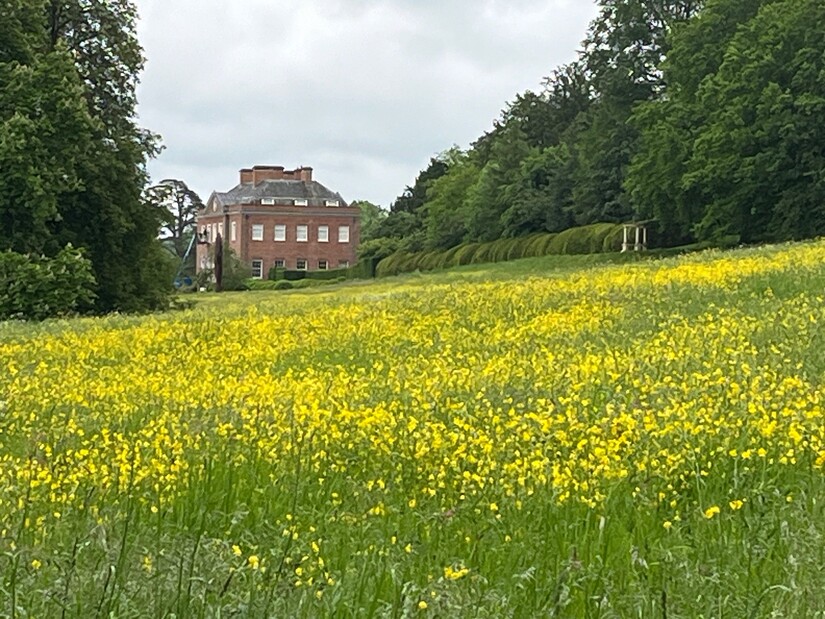
We left the Thames Path and wandered into the village of Bisham, seeking an escape from the rain. Every English village has a pub and a church. We ended up at The Bull Inn at Bisham. However, this village's pub had been transformed into an upscale French eatery, with well-dressed patrons. Management was very accommodating by allowing our soaking and muddied group to lunch there, but we did notice that they hid us in a corner table away from the masses. We refueled on beef au jus and vegetarian sandwiches and huge plates of roasted vegetables. The menu said that this pub dated back to the 1200s, giving us an entirely new perspective on what constitutes “historic.”
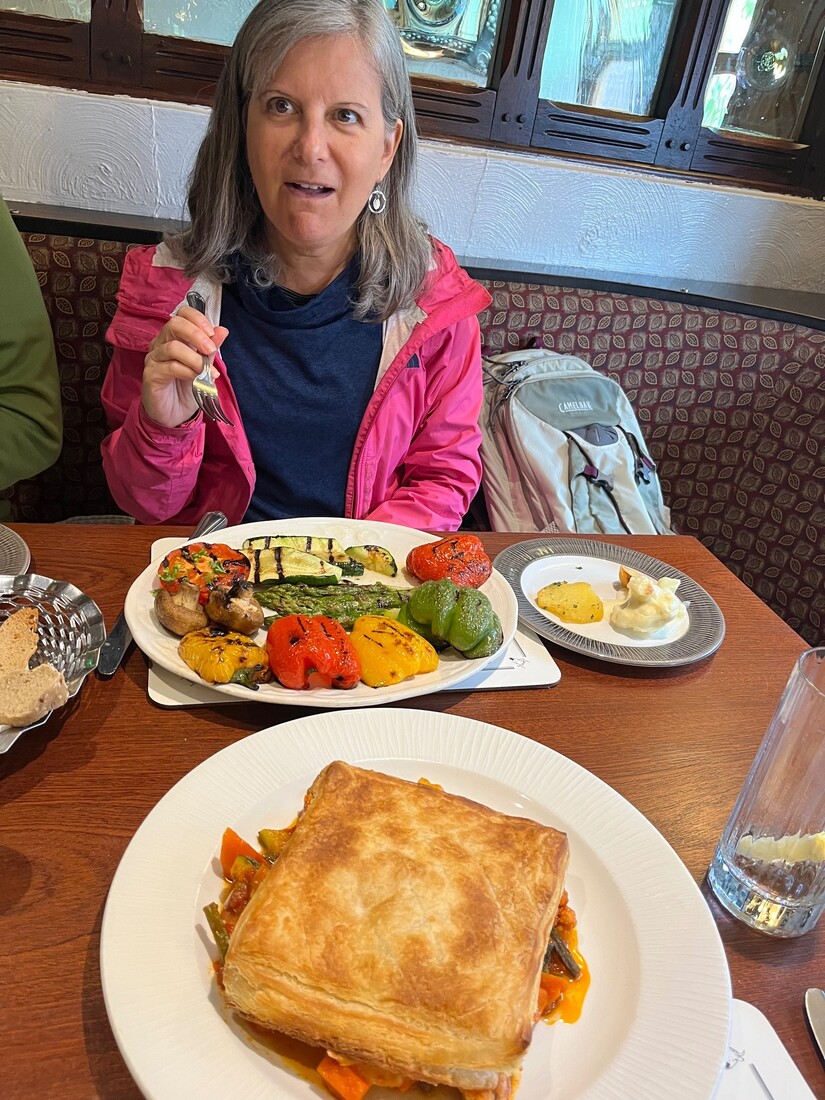
We returned to the path, walked the back streets of Marlow, past blocks of pastel-colored rose bushes, and continued on to our next lodging. On our trek, we stayed evenings at historic inns. Our favorite was this one - the Bel and Dragon. It was quintessentially English, with a low timber-ceilinged pub, a spacious garden for relaxing, and free whiskey in the rooms. This was home to my favorite breakfast - homemade sunflower pancakes with English cream and raspberry compote.
Day three - Cookham to Eton (15 miles)
The third day took us to Eton, the village that houses the college that has been educating the children of British royalty since 1440. The day’s walk was beautiful and uneventful, a fine day by trekking standards. Skies were bluebird clear.
We made two friends on that day - two lovely British ladies swimming in the Thames despite the chill. They said this is a practice they do every day regardless of weather or temperature. First time I have ever seen anyone swimming in bathing suits while wearing knit wool hats and gloves. We decided we wanted to be best friends with them, and chatted them up way too long. We decided that chance encounters with locals such as this is what makes trekking so special.
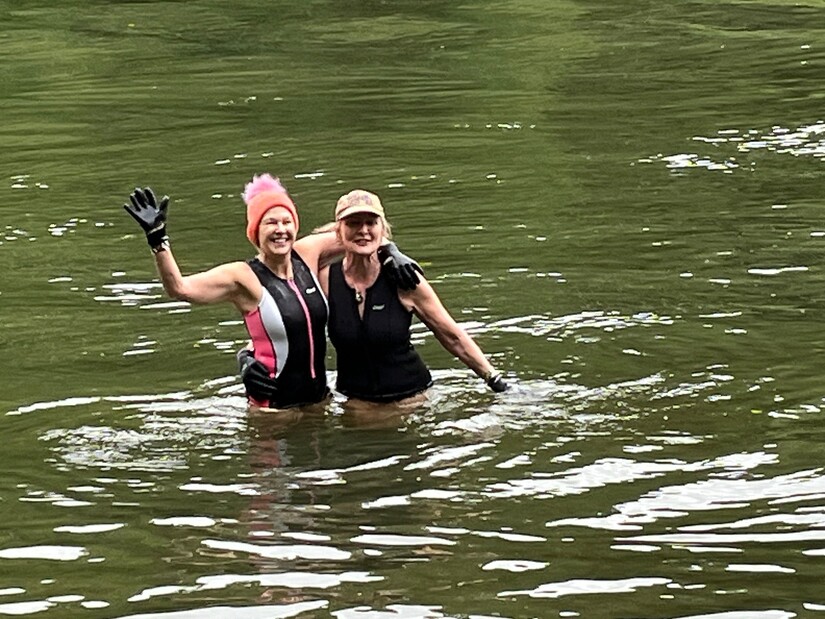
We quickened our pace that day because our goal was at the day’s end. Directly across the river from Eton is Windsor Castle, home to King Charles and an entire cast of past British royalty. The castle appeared to us as we entered town, looming high on a hillside. The setting sun painted the castle a deep gold, and scores of swans carpeted the river. We hustled to the castle to catch the doors open, literally sprinting at times. We toured the opulent St. George’s Chapel where Prince Harry said “I do” to Meghan Markle. We saw room after room of armor suits, weaponry, invaluable pieces of art, and the famous Queen Mary Dollhouse. I am not a museum person per se, but deemed this tour exemplary.
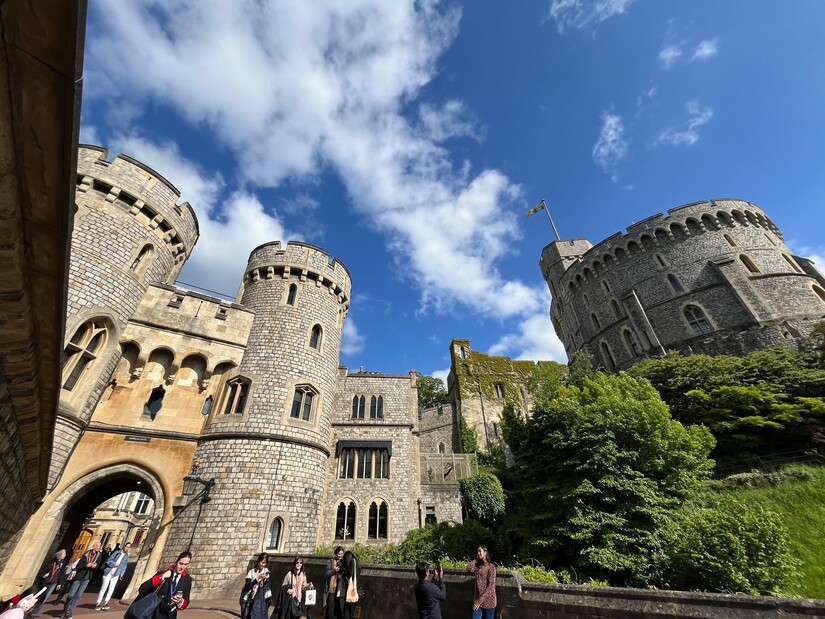
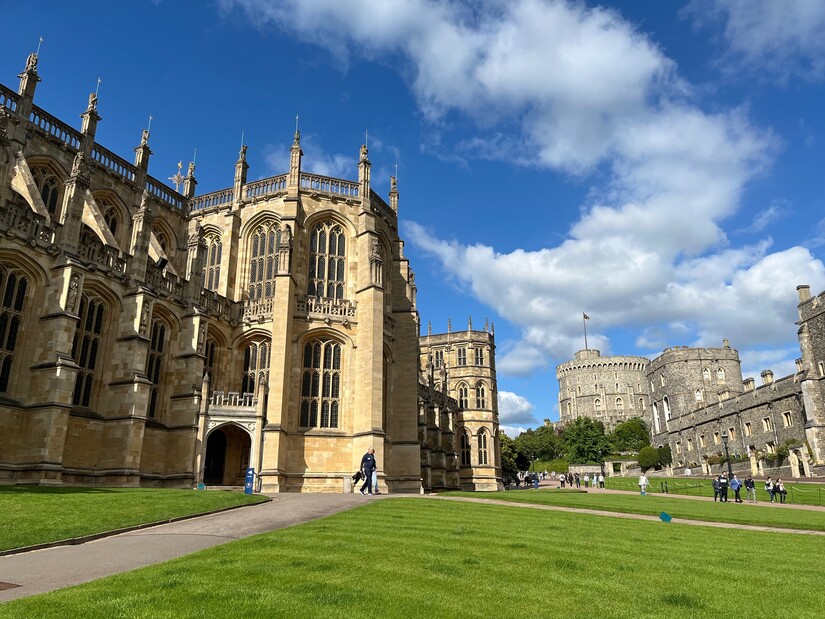
Day four - Eton to Staines (14 miles)
Our destination for the last day was the town of Staines. We made a decision to leave the Thames Path for this day and instead weave our way around Windsor Great Park. We began by following the three-mile-long Long Walk - a walking path straight as a ruled line leading from Windsor Castle to a high hill with an equestrian statue of George III. We wandered country lanes and passed through neighborhoods flush with colorful shrubs that we could not identify. We passed the island where the Magna Carta was signed. The beauty of the independent inn-to-inn trek is that you set your own routes, chasing your own sites and colors and aromas.
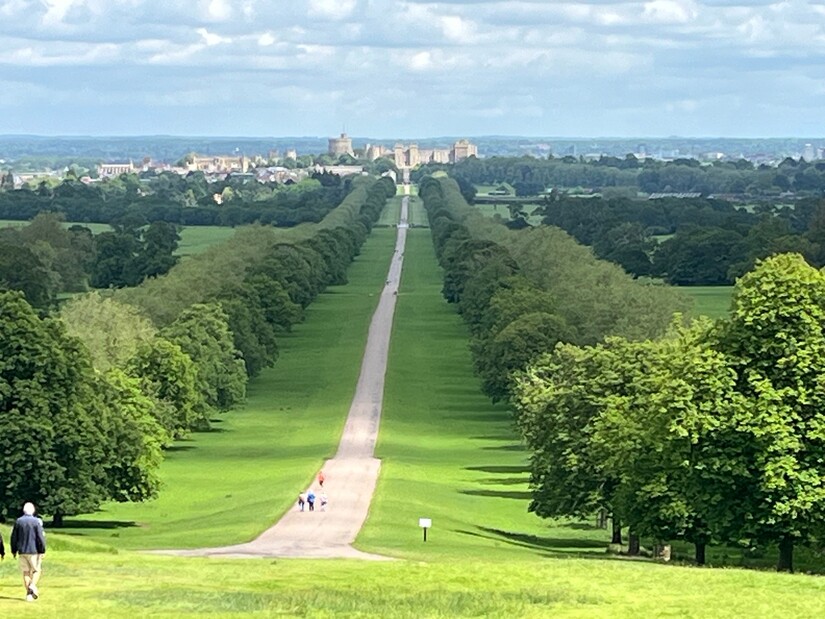
Our journey ended in Staines, where we could feel modernization creeping back into our lives. Busy streets and planes taking off from nearby Heathrow Airport. Buildings back to steel-and-glass. We booked rooms at the historic Swan Hotel and spent the afternoon toasting our adventure and tasting British pub fare on their riverside patio (heavy on the chips). That evening, we skipped across the street and feasted on top-shelf Indian dishes like dals and curries that cost only $6 or so a plate. These were calories well-earned.
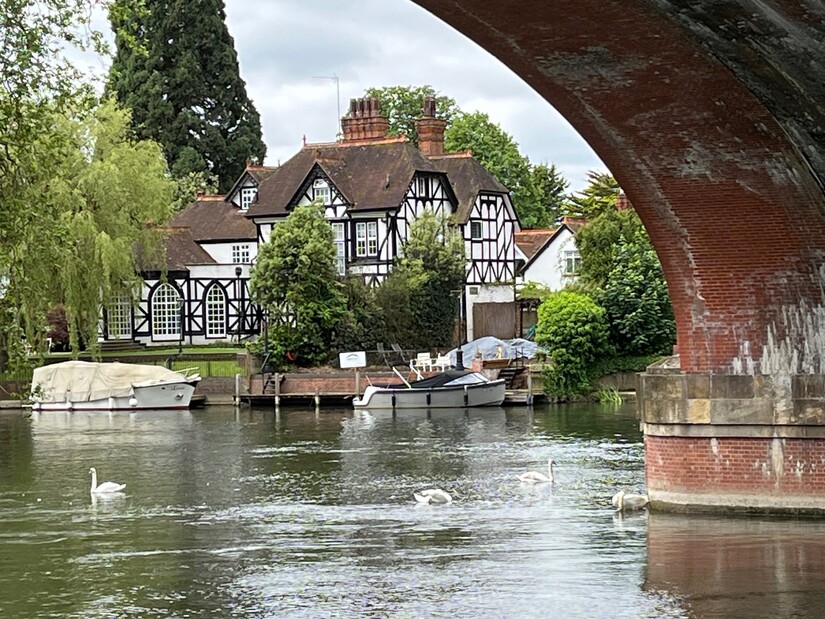
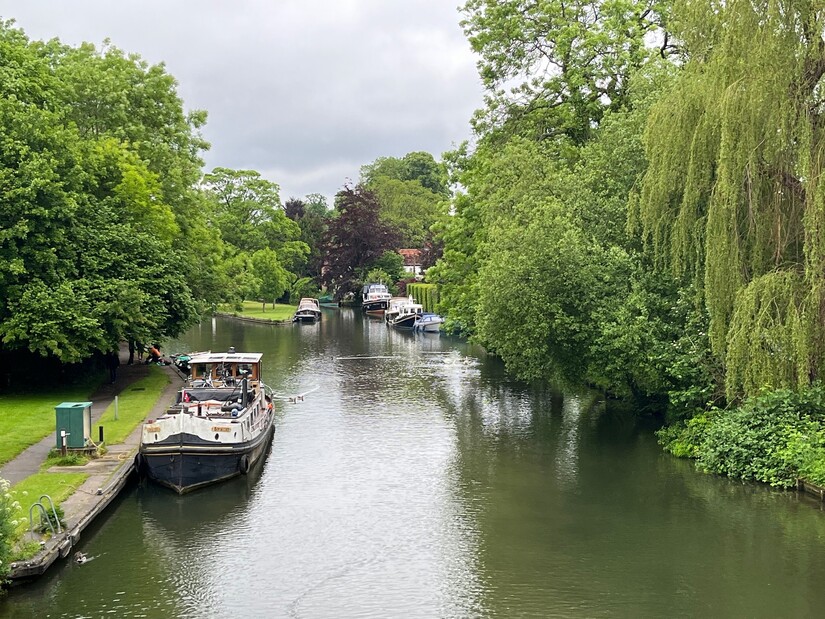
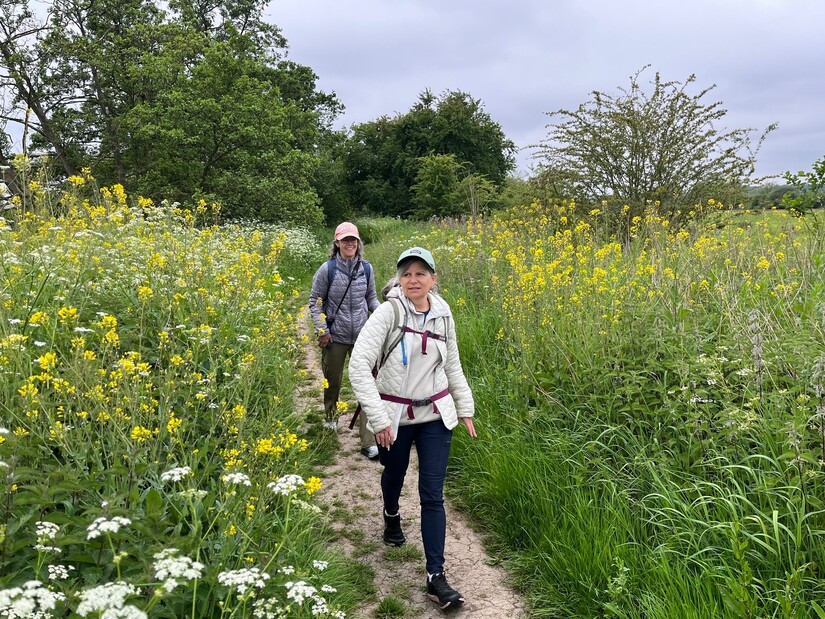
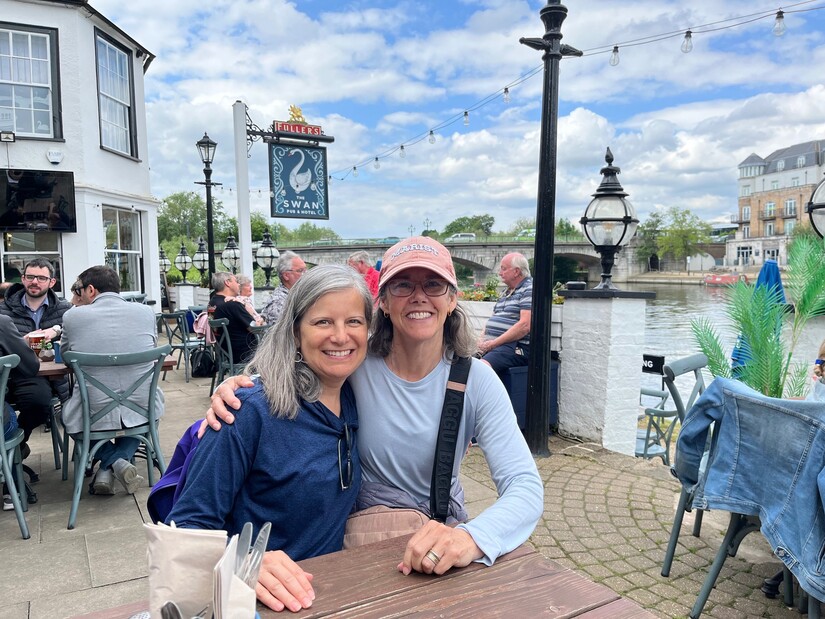
Our inn-to-inn trek set the table for future adventures. We all agreed to explore more countries, more communities on foot. To apply our three miles-per-hour rule to more travel. It was nice being able to stuff our worries and anxieties deep into our knapsacks and never bring them out. It was exhilarating, ambling about with no purpose beyond reaching that night’s inn. The joy was in the process of walking and not the destination. And staying in a new village every night, in a unique inn, with different foods and streets to explore, made each morning feel like Christmas morning.
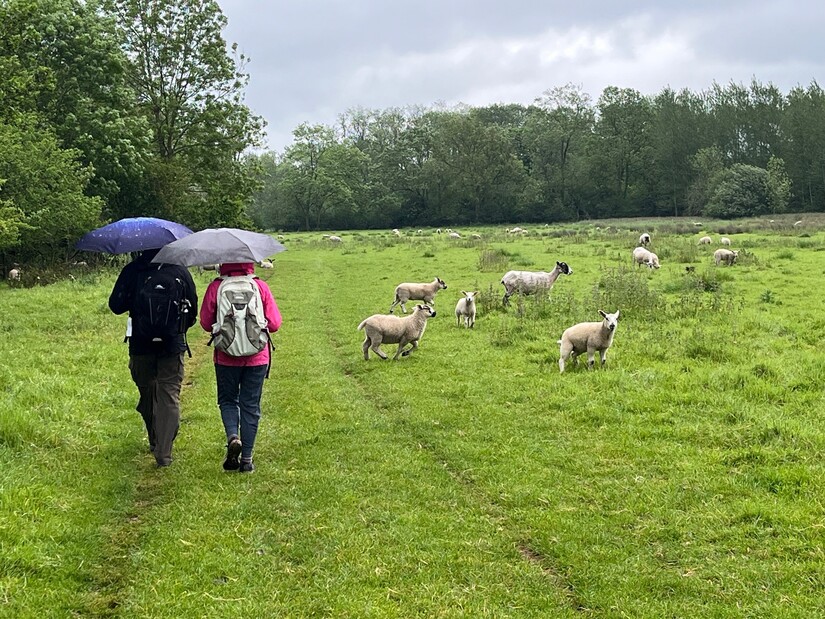
* Mike Strzelecki is a freelance travel and outdoor writer, and 1981 graduate of Boyertown Area Senior High School. He writes from his house in Baltimore, Maryland. In his spare time, he joins his wife on adventures around the country observing and photographing birds.
Great article! Sounds like the perfect vacation to a walker and bicycler such as myself. I noticed a few pictures with what I believe are the country's famed "narrowboats". I have a dream to vacation on a narrowboat, meandering through the canals of England and Wales. Did you learn anything about the history of these narrowboats and how one might travel on one? Thanks! ~Donna
Yep, we looked into that as well. That would be so much fun: